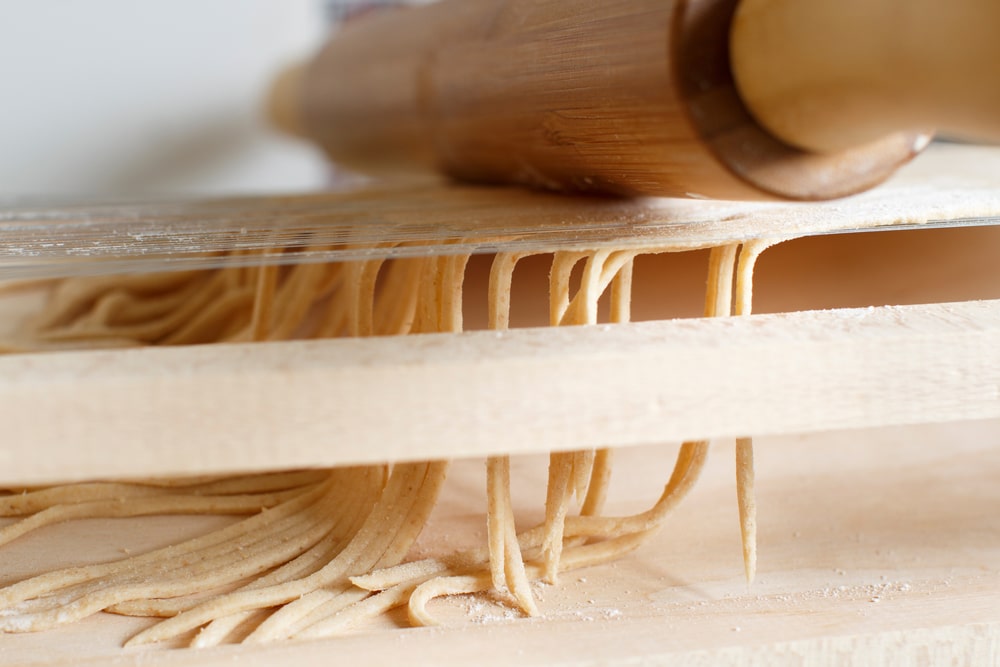A chitarra (pasta guitar) is a frame strung with music wire, used to cut fresh pasta into strands. Chitarras originated in the Abruzzo region of Italy. One rolls out pieces of pasta dough by hand, places each sheet of fresh pasta on the wires, and presses the sheet through the wires with a rolling pin. The cut noodles are then tossed to separate them, and set aside briefly before cooking.
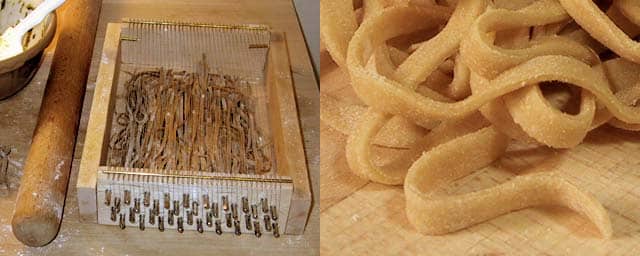
The process begins by making dough, kneading it by hand, and allowing it to rest for an hour or so before rolling and cutting. If the flour has been freshly stone-milled from whole grains, the bran must first be sieved from the flour, additional liquid may be needed for the dough, and stickier dough may need to rest for half an hour to hydrate before being kneaded with more flour. Otherwise, making pasta completely by hand is a simple process. Books are unnecessary for dough recipes, using flour, water or other liquid, eggs or yolks, perhaps salt or oil; get the consistency right and the balance of ingredients can be improvised as easily as making salad.
While pasta is often cut by machine, a pasta machine offers only a few choices for thickness and produces variable results depending on tension and feed rate. By contrast, when rolling out dough with a rolling pin, one can roughly achieve any desired thickness. In fact, it is far easier to make pasta by hand than by machine. It is a less time-consuming, more forgiving, and a more satisfying process to cut pasta with a chitarra; the cuts will be cleaner and the pasta will have a superior texture.
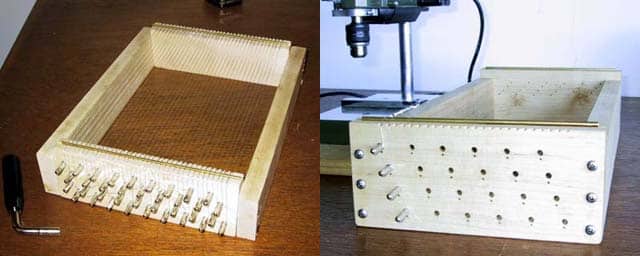
First and second prototypes. The prototype on the left had an error in that the ends should have covered the sides. This was corrected in the one seen on the right.
The problem with commercially available chitarras is that most are rather poorly executed, having global tension controls but no way to adjust individual wire tensions. If a few wires become looser than the rest, what should be a quick process unravels into a frustrating session of tweaking to get the last few strands of pasta from each sheet to fall through. However, making a chitarra is an interesting, if challenging, project.
You’ll need to begin with a wooden frame that will eventually be fitted with zither tuning pins and fine music wire (0.198-inch diameter). The corners of the box may be made with dovetail joints, but screws will be much faster and easier. My first attempt used eight screws in maple wood, which turned out to be no match for 36 strands of #5 music wire tuned to middle C. The frame twisted so badly that tuning the strings on one side pulled the other side and warped the box. A day later, the strings were too loose to cut pasta.
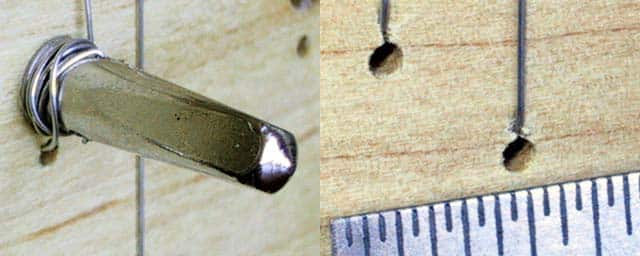
Stringing details. Music wire (#5) is used, threaded through holes 1/16th inch.
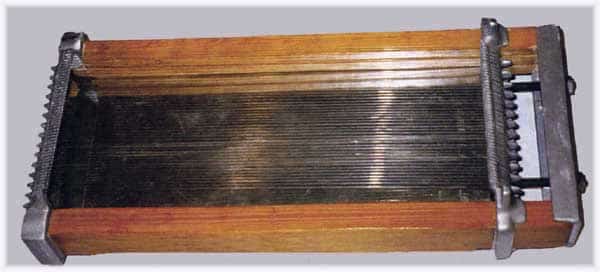
This Italian chitarra is a fine model that has “keys” (on right) necessary to regulate string tension.
One needs a plan for the wire ends. They’re sharp, they can hurt, and one breaks wires while awkwardly stringing the chitarra. I drilled a tiny hole through the tuning block next to each zither pin, and fed each wire end back through the block after going through the pin. This assists in neatly winding wire from both directions around each zither pin.
You will want an ergonomic, easily deciphered, tuning pin layout, keeping the strings from rubbing against pins. Guide grooves are needed for each wire, and grooves filed perpendicularly can hold brass rods to serve as bridges for the strings. This guarantees that the strings all lie in a perfect plane.
My experience in making a chitarra was an adventure that required several prototypes. An experiment that delved into algebra, geometry, music, and history, as well as woodworking, it ultimately yielded a fascinating and effective cooking tool used for making the finest of traditional pastas. For more information and links to plans and sources for commercial chitarras, visit this site. ![]()
First published April 2016
